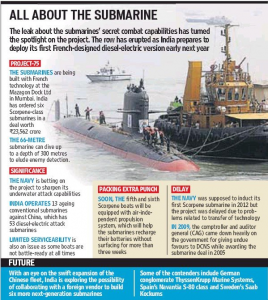Topics
- Ethanol Blending
- Experimental Advanced Superconducting Tokamak (EAST)
- International Labour Union
- Chemical Weapons
- Project 75 India ( Project 75I)
- Ethanol Blending
Context: India Brings forward target of 20% Ethanol blending in Petrol to 2023.
Background:
- Government in 2020 had set a target of reaching 10 per cent ethanol-blending in petrol (10 per cent of ethanol mixed with 90 per cent of diesel) by 2022, and 20 per cent doping by 2030.
- Earlier this year, the target for 20 per cent blending was brought forward to 2025. And now, it has been further advanced to April 2023.
Reason behind advancing the target:
- Decrease dependence on oil imports: India is the world’s third-biggest oil importer, relying on foreign suppliers to meet over 85 per cent of its demand.
- Ethanol blending of 20% was brought forward to 2023 to help reduce India’s dependence on costly oil imports.
- Cleaner Combustion: Ethanol, chemically, constitutes oxygen molecules, which in turn help in better combustion of fuel. This results in less tailpipe emission.
- Promote Renewability: Ethanol blending will reduce the net carbon footprint of the sugar industry. This also acts as monetary catalyst to the industry.
How much Ethanol is required for blending:
- In the current ethanol supply year, which started in October, India plans to have 10 per cent ethanol-blending with gasoline. As much as 4 billion litres of ethanol will be needed for achieving a 10 per cent mixing ratio.
- For 20 per cent by 2023, 10 billion (1,000 crore) litres will be needed.
- The sugar industry will divert 6 million tonnes of surplus sugar to produce 7 billion litres of the ethanol needed, while the remaining ethanol will be produced from excess grain.
Ethanol:
- Ethanol is a biofuel and a common by-product of biomass left by agricultural feedstock such as corn, sugarcane, hemp, potato, etc.
- It is produced mainly from molasses, a byproduct of sugar manufacture.
- Ethanol is basically alcohol of 99%-plus purity, which can be used for blending with petrol.
- Ethanol being a less polluting fuel will cut down carbon emissions.
Ethanol Blending Programme (EBP):
- The Ethanol Blended Petrol (EBP) programme was launched in January, 2003 by the Ministry of Petroleum & Natural Gas (MoP&NG) .
- The government has been implementing the Ethanol Blended Petrol (EBP) Programme wherein Oil Marketing Companies sell petrol blended with ethanol up to 10%.
- This programme has been extended to the whole of India except the Union Territories of Andaman Nicobar and Lakshadweep islands with effect from April 2019 to promote the use of alternative and environment-friendly fuels.
- The government has notified the administered price of ethanol since 2014.
- For the first time during 2018, the differential price of ethanol-based on raw material utilized for ethanol production was announced by the government.
- Ethanol Extraction from Foodgrains:
- In 2018, the Central Government extended the ambit of the EBP programme to extract the fuel from surplus quantities of food grains such as maize, jawar, bajra fruit and vegetable waste.
- Earlier, only excess sugarcane production was allowed to be converted into ethanol for procurement under the programme.
- Expected Benefits:
- Enhancing Farmers’ Income
- Facilitate farmers to diversify their crops to cultivate particularly maize/corn which needs less water compared to sugarcane and rice.
- Provide Employment:
- Investment in capacity addition or establishment of new distilleries shall provide new employment opportunities in rural areas.
- Promote Distributed Ethanol Production:
- Bringing new grain based distilleries in the entire country would result in distributed production of ethanol and would save a lot of transportation cost and thus prevent delays in meeting the blending target.
Ethanol Blending:
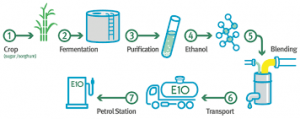
Challenges in Ethanol Blending:
- Less Production: Currently, domestic production of bioethanol is not sufficient to meet the demand for bio-ethanol for blending with petrol at Indian OMCs.
- Sugar mills do not have the financial stability to invest in biofuel plants.
- Water Footprint: While India has become one of the top producers of ethanol but it lags top producers, the USA and Brazil, by a huge margin and remains inefficient in terms of water usage.
- India’s water requirements for producing ethanol are not met through rainwater and the groundwater is used for drinking and other purposes.
- Limited Sugarcane Availability: Sugarcane is another limited resource that affects the ethanol blending in the country.
- Handling issues: Ethanol being a highly flammable liquid marks obligatory safety and risk assessment measures during all phases of production, storage and transportation, thus increasing the cost and risk factor.
Steps Taken to increase indigenous production of Ethanol:
- Allowing diversion of B heavy molasses, sugarcane juice, sugar and sugar syrup for ethanol production.
- Reduction in Goods and Services Tax (GST) on ethanol meant for EBP programme from 18% to 5%.
- Financial Assistance for Expansion of Ethanol Distillation Capacity: The government will provide interest subvention (on loans) to encourage the funding in this sector.
- To set up distilleries for producing 1st Generation (1G) ethanol from feed stocks such as cereals (rice, wheat, barley, corn & sorghum), sugarcane, sugar beet etc.
- To convert molasses (a sugar byproduct) based distilleries to dual feedstock.
- Experimental Advanced Superconducting Tokamak (EAST): China’s Artificial Sun
Context: Recently, China’s EAST achieved a peak temperature of 288 million degrees Fahrenheit, which is over ten times hotter than the sun.
Background:
- Experimental Advanced Superconducting Tokamak (EAST) reactor is an advanced nuclear fusion experimental research device located at the Institute of Plasma Physics of the Chinese Academy of Sciences (ASIPP) in Hefei, China.
- The purpose of the artificial sun is to replicate the process of nuclear fusion, which is the same reaction that powers the sun.
- The EAST project is part of the International Thermonuclear Experimental Reactor (ITER) facility, which will become the world’s largest nuclear fusion reactor when it becomes operational in 2035. The project includes the contributions of several countries, including India, South Korea, Japan, Russia and the United States.
Tokamak:
- The tokamak is an experimental machine designed to harness the energy of fusion.
- Inside a tokamak, the energy produced through the fusion of atoms is absorbed as heat in the walls of the vessel.
- Like a conventional power plant, a fusion power plant uses this heat to produce steam and then electricity by way of turbines and generators.
- As of 2021, it is the leading candidate for a practical fusion reactor.
What is EAST?
- The mission mimics the energy generation process of the sun and other stars.
- Nuclear fusion is a process through which high levels of energy are produced without generating large quantities of nuclear waste.
- Previously, energy was produced through nuclear fission — a process in which the nucleus of a heavy atom was split into two or more nuclei of lighter atoms.
- For nuclear fusion to occur, tremendous heat and pressure are applied on hydrogen atoms so that they fuse together.
- The nuclei of deuterium and tritium — both found in hydrogen — are made to fuse together to create a helium nucleus, a neutron along with a whole lot of energy.
- Fuel is heated to temperatures of over 150 million degrees C so that it forms a hot plasma “soup” of subatomic particles.
- With the help of a strong magnetic field, the plasma is kept away from the walls of the reactor to ensure it does not cool down and lose its potential to generate large amounts of energy. The plasma is confined for long durations for fusion to take place.
Why is fusion better than fission?
- While fission is an easier process to carry out, it generates far more nuclear waste.
- Unlike fission, fusion also does not emit greenhouse gases and is considered a safer process with lower risk of accidents.
- Once mastered, nuclear fusion could potentially provide unlimited clean energy and very low costs.
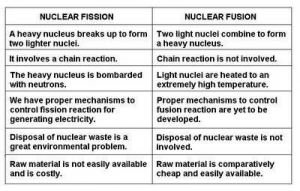
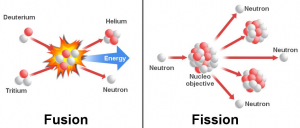
What is the latest record by EAST and why is this Significant?
- The EAST reactor set a new record when it achieved a plasma temperature of 216 million degrees Fahrenheit and also managed to run for 20 seconds at 288 million degrees Fahrenheit.
- It is believed that the temperature at the core of the Sun is 15 million C, which also means that the temperature produced by (EAST) is nearly seven times that of the Sun.
- It is a significant step in the country’s quest to unlock clean and limitless energy, with minimal waste products.
- The next goal for the scientists behind the experimental reactor is to maintain the high temperature for a long period of time.
- This future technology is critical for China’s green development push and the new record is a small step in this direction of creating artificial sun
Which other countries have achieved this feat?
- China is not the only country that has achieved high plasma temperatures. In 2020, South Korea’s KSTAR reactor set a new record by maintaining a plasma temperature of over 100 million degrees Celsius for 20 seconds.
- International Labour Union
Context: Recently, the International Labour Organisation (ILO) has released the World Employment and Social Outlook: Trends (WESO) report 2021.
Key Details:
- Decent work deficits and inequalities transformed the COVID?19 pandemic from a public health crisis into an employment and social crisis that has up? ended the livelihoods of millions of workers.
- At least 220 million people were expected to be left unemployed this year due to Covid19, with only a slight improvement predicted for next year.
- In 2020, an estimated 8.8 per cent of total working hours were lost – the equivalent of the hours worked in one year by 255 million full-time workers.
- Employment growth will be insufficient to make up for the losses suffered until at least 2023.
- 108 million people have fallen into poverty or extreme poverty since 2019.
- The sharp increase in poverty rates is due to lost working hours as economies went into lockdown, outright job losses, and a decline in access to good quality jobs.
- Women have suffered disproportionate job losses while seeing their unpaid working time increase.
- The burden of intensified childcare and homeschooling activities has disproportionately fallen on them.
- As a result, women’s employment dropped by 5% compared with 3.9% for men.
- The pandemic has exacerbated existing inequalities in the labour market, with lower-skilled workers, women, young people or migrants among the most affected.
- Unemployment Rate: Unemployment rate of 6.3% this year (2020-21), falling to 5.7% next year (2021-22) but still up on the pre-pandemic rate of 5.4% in 2019.
- The worst affected regions in the first half of 2021 have been Latin America and the Caribbean and Europe and Central Asia.
Recommendation:
- Preventing long-lasting damage to global economic and social outcomes requires a comprehensive and concerted human-centred policy agenda.
- It recommended among other things ensuring worldwide access to vaccines and financial assistance for developing countries – including through debt restructuring, or enhancing social protection systems.
- Promote broad-based economic growth and the creation of productive employment through investment in sectors that can be a source of decent jobs and that support a just transition, gender equality and vibrant labour markets.
- Support household incomes and labour market transitions, particularly for those most affected by the crisis, through active labour market policies, public employment services and publicly provided, high-quality care services.
International Labour Organisation:
- The International Labour Organization (ILO) is a United Nations specialised agency dealing with labour issues, particularly international labour standards, social protection, and work opportunities for all.
- It was created in 1919, as part of the Treaty of Versailles that ended World War I.
- It is a tripartite organization, the only one of its kind bringing together representatives of governments, employers and workers in its executive bodies.
- Headquarter of ILO is located in Geneva, Switzerland.
- It has total of 187 member States.
- It played a key role in the decolonization process and in the victory over apartheid in South Africa.
- The organization got the Nobel Peace Prize in 1969, for its efforts to improve peace amongst the classes, and for promoting justice and fair work for the workers.
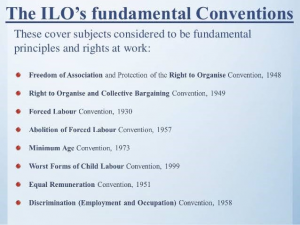
International Labour Organization and India:
- India is a founding member of the ILO. It became a permanent member of the ILO Governing Body in 1922. The first ILO Office in India was inaugurated in 1928.
- India has ratified six fundamental conventions.
- India has not ratified Freedom of Association and Protection of the Right to Organise Convention, 1948 (No. 87) and Right to Organise and Collective Bargaining Convention, 1949 (No. 98).
- As the two conventions involve the granting of certain rights that are prohibited under the statutory rules for government employees.
- In 2020 India assumed the Chairmanship of the Governing Body of ILO.
- Chemical Weapons
Context: 17 instances of chemical weapons used in Syria as per Organisation for the Prohibition of Chemical Weapons (OPCW)
Background:
- In April 2020, the OPCW investigators blamed three chemical attacks in 2017 on the Syrian government
- After investigating 77 allegations against Syria on using chemical weapons OPCW has concluded that in 17 cases chemical weapons were likely or definitely used.
- Investigation finds Syria likely behind 2018 chlorine attack on the city of Saraqeb.
- Chlorine is a choking agent. Its greenish-yellow clouds of gas cause shortness of breath, wheezing, respiratory failure, irritation in the eyes, vomiting, and sometimes death.
- It also found the presence of a new chemical weapons agent in samples collected in large storage containers in September 2020.
- Russia slams OPCW for collecting evidence remotely and relying on ‘pseudo witnesses’.
- In an unprecedented vote on April 21, 2021 the OPCW suspended Syria’s rights until all outstanding issues are resolved.
What are chemical weapons?
- It is a toxic chemical in a delivery system such as bomb or artillery.
- The Chemical weapons Convention defines each component of a chemical weapon as a chemical weapon— whether assembled or not, stored together or separately. Anything specifically designed or intended for use in direct connection with the release of a chemical agent to cause death or harm is itself a chemical weapon.
Organisation for the Prohibition of Chemical Weapons (OPCW)
- The Organisation for the Prohibition of Chemical Weapons is the implementing body of the Chemical Weapons Convention (CWC), which entered into force in 1997 ,which prohibits the use, stockpiling, or transfer of chemical weapons by signatory states.
- The OPCW is authorized to perform inspections to verify that signatory states are complying with the convention.
- This includes a commitment to grant inspectors full access to chemical weapons sites.
- The OPCW also performs testing of sites and victims of suspected chemical weapons attacks.
- By the 2001 Relationship Agreement between the OPCW and the United Nations, the OPCW reports on its inspections and other activities to the UN through the office of the Secretary General.
- The OPCW was awarded the Nobel Peace Prize in 2013. Its headquarters are located in the Hague, Netherlands.
The OPCW Member States share the collective goal of preventing chemistry from ever again being used for warfare, thereby strengthening international security. To this end, the Convention contains four key provisions:
- Destroying all existing chemical weapons under international verification by the OPCW.
- Monitoring chemical industry to prevent new weapons from re-emerging.
- Providing assistance and protection to States Parties against chemical threats.
- Fostering international cooperation to strengthen implementation of the Convention and promote the peaceful use of chemistry.
The Chemical Weapons Convention prohibits:
- Developing, producing, acquiring, stockpiling, or retaining chemical weapons.
- The direct or indirect transfer of chemical weapons.
- Chemical weapons use or military preparation for use.
- Assisting, encouraging, or inducing other states to engage in CWC-prohibited activity.
- The use of riot control agents “as a method of warfare.”

How many countries possess or use chemical weapons?
- Of the 192 CWC signatories, Albania, India, Iraq, Libya, Russia, Syria, and the US declared possession. Albania, India, Libya, Russia — and Syria — declared completion of destruction of chemical weapons. According to OPCW, 96.27% or 69,610 of 72,304 tonnes of the world’s stockpile of chemical weapons have been “verifiably destroyed”.
Who else have used chemical weapons?
- In World War I, chlorine and phosgene gases were released on the battlefield.
- Iraq used chemical weapons in Iran during the 1980s war, and mustard gas and nerve agents against Kurdish residents in 1988.
- In Matsumoto in Japan in 1994, 8 people died and 500 were affected in a sarin attack.
- In a sarin attack in the Tokyo subway in 1995, 12 people died and 50 were injured.
- Project 75 India (Project 75I)
Context: Government of India clears building of 6 attack submarines.
Key Details:
- The Defence Acquisition Council (DAC) gave the Indian Navy the go-ahead to select an Indian strategic partner company which, in collaboration with a foreign Original Equipment Manufacturer (OEM), for the construction of six Conventional Submarines under Project P 75 (I) under the Strategic Partnership (SP) Model.
- This project envisages indigenous construction of six conventional submarines equipped with the state-of-the-art Air Independent Propulsion system at an estimated cost of Rs 43,000 crore.
- Two Indian companies shortlisted as strategic partners, Mazagon Dock Shipbuilders Limited (MDL) and Larsen & Toubro, will have to respond, in partnership with one of the five OEMs, to the Request for Proposal (RFP)
- Project 75 India or P75I will be the first under the strategic partnership model, promulgated in 2017 to boost indigenous defence manufacturing. The first submarine built under the project is likely to be delivered by 2030.
- This is the first case processed under the Strategic Partnership model. This would be one of the largest ‘Make in India’ projects and will serve to facilitate faster and more significant absorption of technology and create a tiered industrial ecosystem for submarine construction in India.
- From a strategic perspective, this will help reduce current dependence on imports and gradually ensure greater self-reliance and dependability of supplies from indigenous sources.
- As per Parliament’s Standing Committee on Defence’s report in March 2020 , India have 15 conventional submarines and two Nuclear Submarines in the Indian Navy and majority of the conventional submarines are over 25 years old.
- India has only one nuclear submarine, INS Arihant, at the moment. The INS Arighat, also a nuclear-powered ballistic missile submarine, is to be commissioned soon.
- The DAC nod for six conventional submarines came around the end date of 10 year lease term for INS Chakra, leased from Russia and one of India’s two nuclear submarines.
- The Cabinet Committee on Security, in June 1999, had approved a 30-year submarine-building plan which included construction of 24 conventional submarines indigenously by 2030.
- Of the total 24 submarines to be built in India, six will be nuclear-powered.
Project 75:
- The Project 75I-class submarine is a follow-on of the Project 75 Kalvari-class submarine for the Indian Navy.
- In the late 1990s, around the time of Kargil war, a three-decade plan took shape for indigenous construction of submarines.
- It was known to have two separate series of submarine building lines – codenamed Project 75 and Project 75I — in collaboration with foreign entities.
- Under this project, the Indian Navy intends to acquire six diesel-electric submarines, which will also feature advanced air-independent propulsion systems.
- This is for enabling them to stay submerged for longer duration and substantially increase their operational range.
Classes of Submarines in India:
- In maritime terms, a class of ships is a group of vessels which have the same make, purpose and displacement.
- In the Navy and Coast Guard in India, the ships belonging to a particular class are named in a specific manner.
- Many times the names have the same first letters, prefixes, similar meanings or the names belong to a particular type of words for example names of cities, persons, mythological concepts, animals, rivers, mountains, weapons, etc.
- The class is generally named after the first vessel in the category. In some cases, a particular class of vessels takes their names from an earlier class of vessels which are now decommissioned.
- Khanderi has been named after an Island Fort built by Chhatrapati Shivaji, which played a key role in his Navy. Karanj has also been named after an Island located South of Mumbai.
